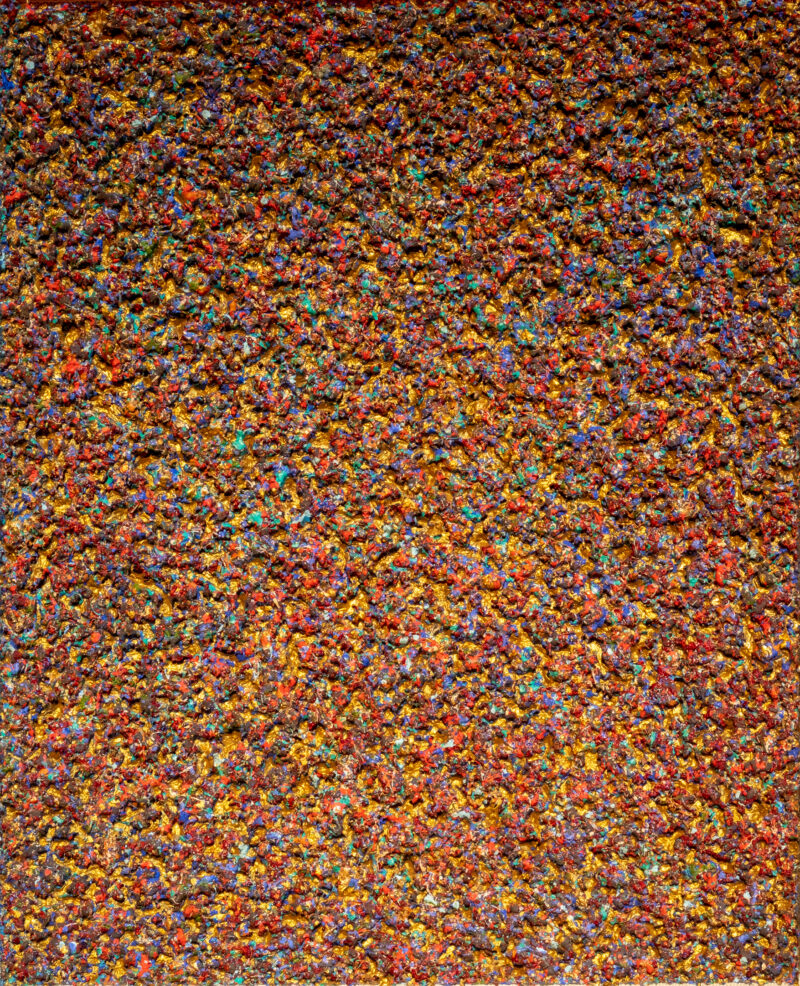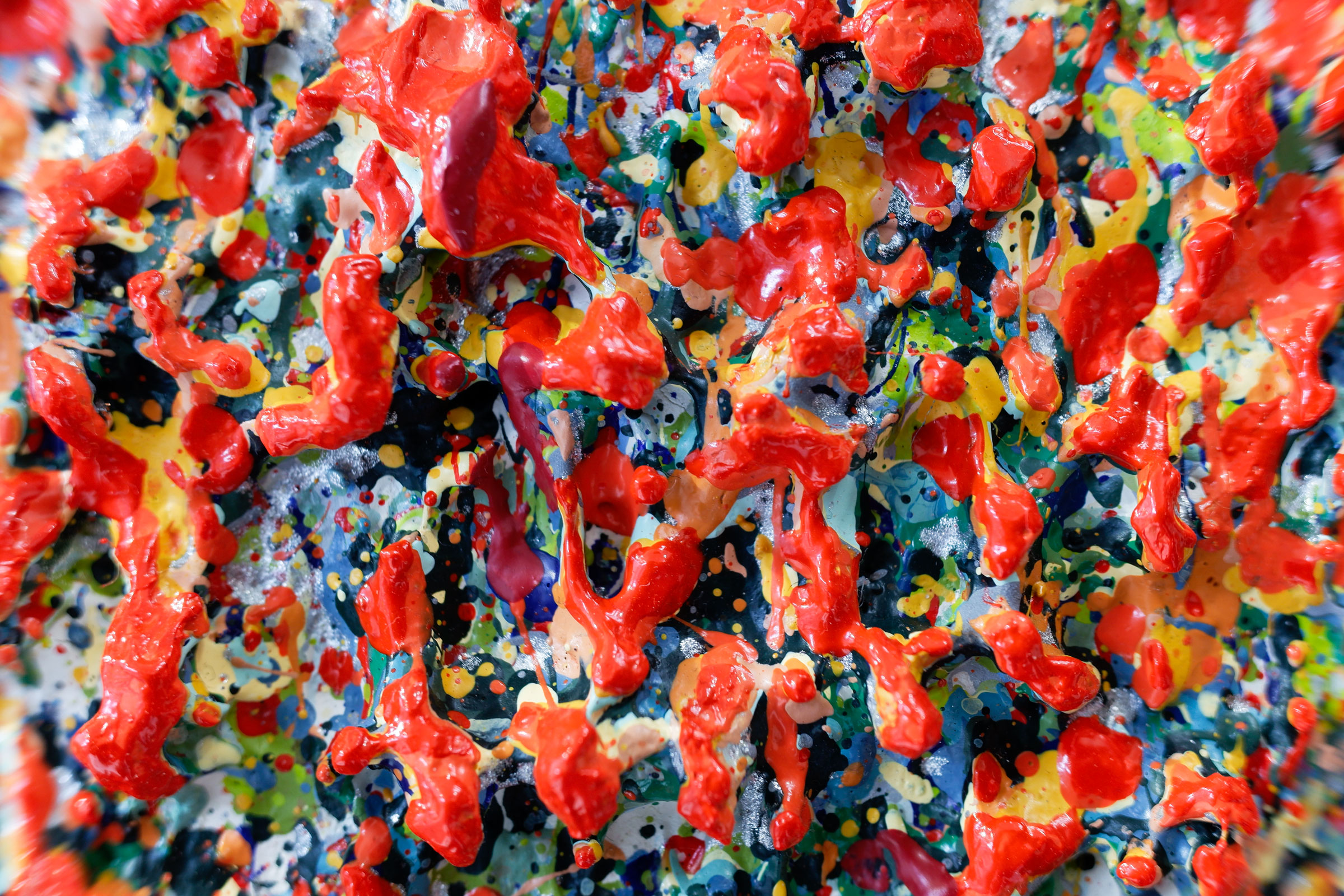

***
Jon Cox
****
Golden Garden (2022), acrylic on canvas, mixed media, 16 in by 20 in.
An Experimental Life
Jon Cox was born in 1973 in Balclutha and attended South Otago High School before moving to Dunedin in 1991 to join the music scene, playing in bands such as Isolation Backlash and The Strangeloves. After enrolling at University of Otago in 1994 where he completed 120 points of first year papers over three years, he concluded that the truth was not to be found in graduate education – just as his close friend the poet Nick Ascroft had predicted. Jon then left Dunedin for London which started him on a lifelong love affair with travel and travel photography. On his return he spent time in Invercargill where he studied audio production and released music under the moniker The Lazy Gene. Moving to Melbourne in 2011 afforded him the opportunity to travel for months at a time each year. He went to places such as India and Iran where he discovered the desert and the beauty of decaying buildings. During this period he developed his skills as a photographer, focusing on street photography and portraits – capturing the lines and stories on the faces of his subjects.
In 2020, Jon returned to Dunedin during the pandemic. He knew he could never leave; his parents were aging and his vagabond days had come to an end. On January 1, 2021, living in Port Chalmers and missing the excitement of travel and new experiences, he decided to embark on another adventure, this time on canvas. With no previous painting experience he was taught by the materials he worked with, continuing his pursuit of “an experimental life” – this time by baking soaking canvases in the sun and then finding them cracked and reformed in unexpected ways. Soot retrieved from chimneys, rusted metal from Otago Harbour, chalk and clay, oil and acrylic, as well as constant experimentation with different aggregate media, fuelled his creativity. Having a fascination with liquids, Jon often created in a meditative state, following the flow and course of the medium. The works are layered and cumulative where what is below is equally important as what is visible.
*****
* * *
Details: texture, flow and surface in the paintings of Jon Cox
Get updates from this and more artists
We will process the personal data you have supplied in accordance with our privacy policy.


